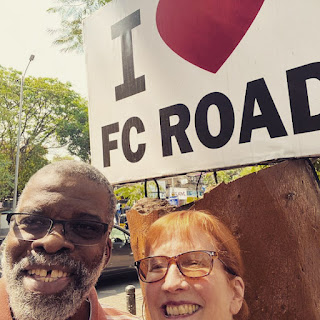Devoney Looser, known for her scholarship on Jane Austen and other ‘strong women’ of the long 18th century, has crafted a detailed and lengthy biography of two fascinating and mostly unknown women - Jane and Anna Maria Porter. While they lived, and afterward, in the late 18th and early-mid 19th century, they were famous novelists. After years of research, combing through stacks and stacks of largely illegible letters, finding and digesting other documents, books, and articles, Looser has compiled not just a biography, but a fascinating tale of two women who were prolific novelists and innovators in the novel form, despite being manipulated by other women, betrayed and led on by many men in their lives, let down by brothers, and at the door of poverty for most of their adult lives.
Who should read this book? Everyone! The book is for all who…
- love to read about strong women
- love a twist in the tale
- love biography that reads like fiction
- are scholars and professors
- are librarians
- are feminists
- love Jane Austen
Let’s talk about some of the dominant themes of the book. Debt. Almost everyone is in debt and often for most of their adult lives. The two sister novelists, Jane and Maria, are in and out of debt, but mostly in. They write because they love to write, but also because they need to make a living, to pay for their home, the coal that heats it, the clothes they wear, travels to visit friends, their brothers’ debts! Their brothers were often in debt, and sometimes had to leave the country to avoid debtor’s prison. What surprised me was how poorly most people managed their money, especially the men, including Sir Walter Scott! Wow! His writing was phenomenal but his debts were astronomical!
Another consistent theme is manipulation and abuse. Both Jane and Maria are manipulated by men—royalty, actors, brothers. They were led on, mistreated, and even fondled (by women and men!). They ‘hoped’ that a certain personage would leave them a bequest, or a pension, or just loan them some money, and only a few did. The two men who treated them the best, in my opinion, were their two publishers, Longman and Rees. They gave both Jane and Maria advances and went out of their way to be encouraging and helpful, to the extent they could.
Sex outside of marriage is another theme. Many of the men in the book, and some women, were known for engaging in sex with someone other than their spouses. I learned that adultery was referred to as “criminal conversation” or crim. con. for short, and was punishable with a prison term. For once, only the man was charged (in this case), not the woman, who was cheating on her husband. Royals and commoners alike engaged in extramarital sex, a well-known secret.
“Wow!” I exclaimed aloud as I read page 412. I learned that Harriet Jacobs, whose slave narrative I teach in World Literature 1650-present, raised the child of N.P. Willis (alias Mr. Bruce in Incidents in the Life of a Slave Girl). Nathanial Parker Willis became a close friend and confidante of Jane Porter in her later life. Looser also refers to the Porters sisters’ time with the Volkonsky family and their cousins, the Tolstoys—related to the future novelist (whom I also teach in World Literature!).
One of the reasons I was drawn to and riveted by the book is its time period and setting. My historical novel Remnant is set against the same British backdrop—An Act for the Abolition of the Slave Trade in 1807 and the Slavery Abolition Act in 1833. More good news on Remnant soon!
I could go on, but I’ll stop here so you can go out and buy the book or get it at a local library and start reading! You won’t be disappointed.















